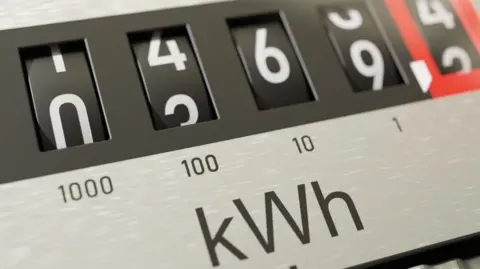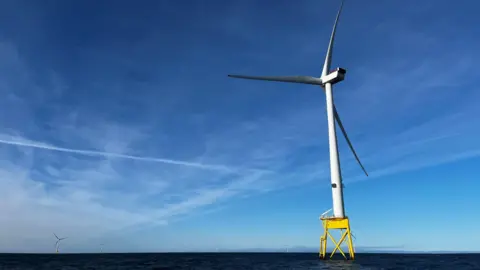Why zonal electricity pricing for Scotland is not going to happen
 Getty Images
Getty ImagesLower electricity bills in Scotland: It seems an attractive option for hard-pressed Scottish householders and businesses.
That had been a possibility as a result of electricity market reforms being considered by the previous and the current UK governments.
You may not have heard much about it, at least until the announcement that it's not going to happen.
Other than Octopus, a supplier wanting to champion customers, there have been few calling for Scotland to embrace a system of "zonal" pricing, which would have meant balancing demand with abundant supply from Scottish renewable sources.
What you may have heard a lot more, are complaints that rural Scotland is being industrialised to get that abundant wind power from Scottish hilltops and coastlines to the big customer base south of the border.
 Reuters
ReutersThose complaints are only likely to get louder, now that Ed Miliband, the UK energy secretary, has decided against zonal pricing, and in favour of other market reforms.
The reforms he's chosen emphasise incentives to build more renewable power capacity - more of the cables, pylons and substations to get high-voltage power to market and to do so more quickly.
His calculation was influenced by the prospect of some power bills going up for those parts of the country where demand outstrips supply, which would mean much of England.
That would not have been smart politically. And the benefit of lower prices in areas including Scotland would not have been seen for perhaps another decade, as reform would have taken almost that long.
The minister and his Department for Energy Security and Net Zero (DESNZ) was also subject to a lot of lobbying pressure from the power industry to close off the zonal option, clarifying the future of pricing and allowing investors to get on with construction.

Without clarity on pricing, financial risk goes up. Margins are already tight, after several years of input price inflation.
Uncertainty about the future shape of the market has created a hiatus. The big renewables investors, including SSE and Scottish Power, which own and operate the grid north of the Border, have welcomed the announcement and say it lets them get on with their plans.
Almost all the response, including those power companies, Scottish Renewables, the industry representative, energy consultancy Cornwall Insight and the Scottish Government's minister Gillian Martin, take a similar line - now that zonal pricing is out the way, don't let up on other necessary market reform.
Cornwall Insight describes it as being under "severe strain", saying clarity about zonal pricing is not to be confused with resolution of market problems.
 Getty Images
Getty ImagesEd MIliband's solutions focus on removing bottlenecks in getting power to market - building more grid connections and installing them faster, with more battery parks to store power until the surge in supply is over.
He's also looking to yet another consultation on a feature of the energy market that has weighed heavily on investments in Scotland. Grid connection charges are paid by owners of wind turbines for having access to the national grid.
They are highest in the north of Scotland and go lower as you go south. The logic was to incentivise the industry to build power plants close to population centres and industry, in the days when electricity came from coal and gas.
Power is now more likely to come from the parts of Britain where the wind blows most strongly, including its seas. And they tend to be to the north, so there's a strong case for reorienting the market to remove that incentive to build in the south.
There is a further reason why some may have been unsure of grasping lower energy bills for Scots.
Zonal pricing, with cheaper electricity in the north, would have had the effect of creating an incentive for heavy industry to head north - imagine the relocation of cement, steel, glass and auto manufacturing to the Highlands.
Even without zonal pricing, that incentive could mean that newer industries locate close to the source of energy, including hydrogen production and data centres.
